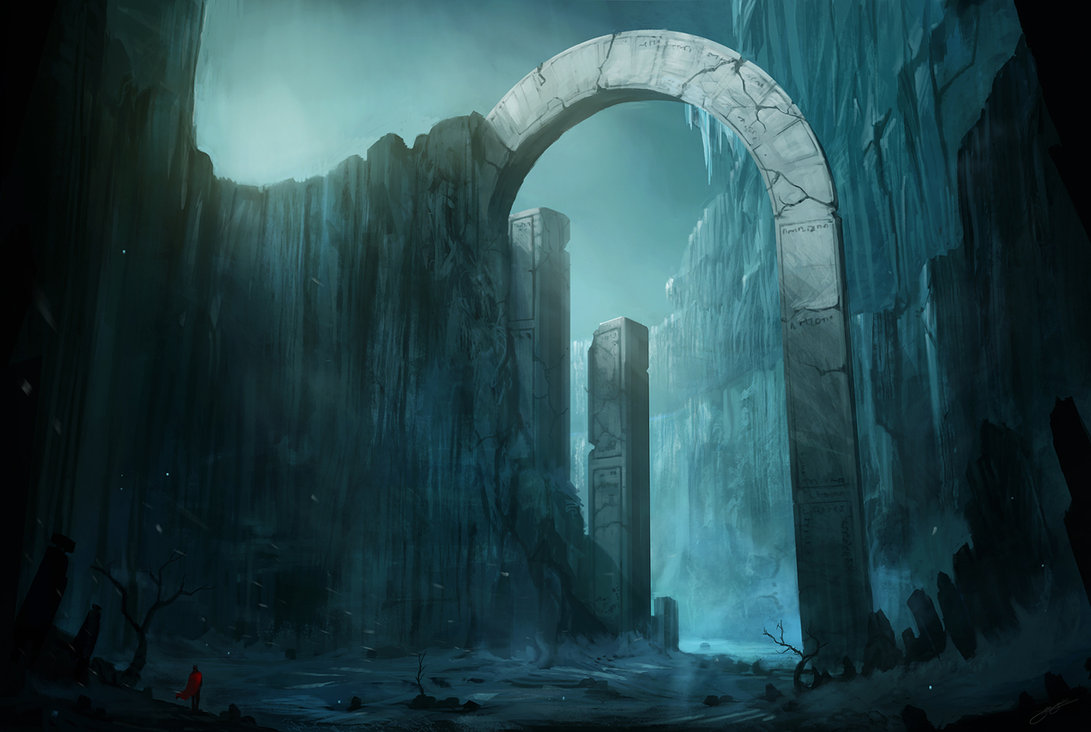Arcana Formulae
Its commonly known that gnomes are not the most intelligent creatures but they are absolute geniuses when it comes to adapting to an environment and making things work. Who puts a symbol on a rock? They just did it and bam! Magic torch...From runes to a complex formula, the genre of magic commonly known as enchantment has grown and evolved much in the nation of Estoya and by proxy, its neighboring nations.
Enchantment is one of many genres of magic listed in arcane tomes across the land.
What once began as a primitive tool used by gnomes grew to become one of the most complex and powerful forms of magic. Its practice is widespread in one form or another and some regard its modern applications as an art form, integrating it in their crafts leading to a massive uptick of self-enchantment through tattoos and magic items such as enchanted weapons.
While significantly more expensive, the investment is worth the effort.
This is my new designer collection, the sword contains both runes and sigils and I used a Mhirrian based dialect to make the glyphs. It works with a handy set of gears in the pommel. You twist this wheel till the arrow aligns with the desired enchantment and there you go.. Don't let the price tag deter you, you always get what you paid for here...
The effects of enchantments are varied and some have several effects linked together in elaborate chains. The purpose of enchantment is to efficiently cast a spell or apply a magical effect in any way without expending magical energy or needing to be present when the enchantment is activated.
It is a complex magical art form that has stemmed from experimentation to grant safety efficiency, and convenience.
Due to the complex elements of an enchantment, any mistake can radically change the effect, sometimes to lethal degrees. This, however, occurred mostly in the genres infancy.
There are four types of enchantments that have developed over time: runes, sigils, glyphs, and formula.
Each of these types are an evolution of the one before it, the study and development of which occurring over the last 300 years.
Runes
Enchantment in Estoya began in the form of Gnomish runes. These objects were made of a specific type of gemstone and a single symbol called a rune carved, drawn, or in some way placed on the stone. Mixing stones and runes often yields different effects and as time went on, new runic dialects were created. Currently, three dialects are used throughout the world.The Druidic Oghram
The druidic runes, referred to as Oghram are symbols representing different breeds of trees. Each rune is carved into a chunk of bark. When charged, then rune activates and is self-sustained. While the original gnomish dialect focused on simple elemental effects, the druidic runes focus more on nature. Making plants grow, come to life, or charming wildlife are all examples of these effects.Why Runes Work
The bards are the ones who determined why runes work. Runes are symbols that have acquired the same meaning among a very large group of people. This collective cultural consciousness still remains even though the cultures are long dead, similar to how bardic lore functions.Sigils
Sigils are a refined form of runes. Runes are static and each combination of rune and stone will apply the same effects they always have. Even when mixed with new combinations you will never find anything too unexpected and more importantly, you can't create new runes in a dialect, meaning learning a dialect gives you an advantage over an enemy using it and vice versa.As such a few clever mages went out of their way to establish a new form of enchantment. These became sigils and were inspired by the sigils of Ozlith.
What differs between sigils and runes is that runes are independent of knowledge and runes do not need to be charged.
Alphabetical Sigils
As the experiments continued something new occurred. Mages discovered that while a single person cannot create their own dialect of runes or sigils, the alphabet itself was a set of culturally relevant symbols.If one writes a simple sentence, and breaks each word into the first and last letters, you can arrange those letters, even using a specific part of a letter into any pattern and the effect made clear in that sentence would apply.
This means that you can use your own language to apply specific effects, control those effects and apply conditions to when those effects would occur and how.
Runic Sigils
Like with the Estoyan dialect of runes, the first sigil was an experiment set by the mages tower in Rouxsgate . The goal was to create more diverse effects that were more convenient and varied. The effects of the runes are simple and could only be useful in a number of ways. However, if you combine one rune with other runes in a circle, then actively charged the new symbols it could yield New and more diverse effects. This was taken a step further when the mages sought to create a unified dialect of these sigils.This was a revolutionary idea and was successful to a degree. The establishment of dialects worked, but the sigils were temperamental and had to be extremely accurate or the results could be dangerous.
Conditions
Enchantment has, since the development of sigils, placed enormous significance on conditions.A condition is nothing more than enchanting based on context rather than effect. A condition. Is a contextual limitation, addition, or any set of rules that one adds to their enchantment. These conditions are usually simple, as the more words added the more complex the sigil and by proxy the harder to duplicate perfectly. Since the creation of sigils, the establishment of conditions, such as a failsafe, has been essential to ensure safety and also to cater an enchantment to specific needs.
It's far more useful to have a sword that can use both fire and water elements, but it wasn't until the development of conditions that such a thing was even possible.
Intent
Intent is the secret to modern enchantments, and became the primary goal of Lady Valentina as she developed the last two methods of enchantment. The intent is literally the intent of the symbols in an enchantment which negates the actual meaning of the symbols used.The Condition of Intent
A term coined by Lady Valentina, the condition of intent is a sigil or a thought the enchanter has when charging an enchantment with arcane energy. If you state that the conditions and intents of your enchantments are whatever you want them to be at the time of creation, specifics and accuracy are no longer relevant.The Gnomish runes
The Gnomes discovered ancient writing on the walls of caves in Waiversea and the Waiversea hills . They found that when placed in or on a stone, the enchantment is primed and ready without charging. The symbols are unknown in origin and were used as the established runic dialect in Estalia for some time. Many believe the runic dialect originated in Ozlith , but Ozlith is only known to use a different form of enchantment similar to sigils. The gnomish runes are far more focused on applying elemental effects to whatever they are on, leading the gnomes to develop tools with them to make certain tasks easier such as fishing which they did with a crude lightning spear, or lighting their novels with fire or light runes on sticks for torches.The Estalian Runic Dialect
In present-day Estalia, the runic dialect officially used by most, is a combined dialect with various changes applied to maximize efficiency. Runesmiths run experiments routinely to test new combinations, but the applications of runes can only be changed so much. Runes are very static and can only be used for certain effects.While runes can be very effective and are often used for weapons and for lighting rooms, they lack other practical applications. This fact led to new experiments that attempted to create other ways to accomplish more complex goals and that could allow the user to exhibit more control over the effect as you can't alternate between two runes on the same weapons, use more than one rune if the other cancels the first runes' effects, or "turn the rune of" so to speak
Blood Sigils
Blood sigils were used in ozlith. Using ozlithian language, the sigils would require the sacrifice of blood to activate leading to the idea of conditions. Blood sigils are also far more lenient as far as a perfect application of the symbols used as blood is potent and can be used to channel intent which led to the idea of glyphs.Remove these ads. Join the Worldbuilders Guild








The inclusion of pictures and quotes are always welcome, though I would like to see you add the person who said such a thing, just to give it a little more life. You may wish to re-read your article, as I've found a couple of spelling errors as well as a few I's that need capitalizing, and some places where there is an unnecessary amount of paragraph spacing. You mentioned that this kind of magic was first discovered by the Gnomes a long time ago. Was there ever an attempt from the Gnomes to keep this magic to themselves? How did this knowledge spill out to the rest of the world?
Thanks for your comment. Always appreciated and yeah but I was having a real hard time with it so forgot to add the authors lol and gnomes are very accommodating and their culture doesn't really have a notion of ownership. When the gnomes left their homeland they came to estalia and brought runes.